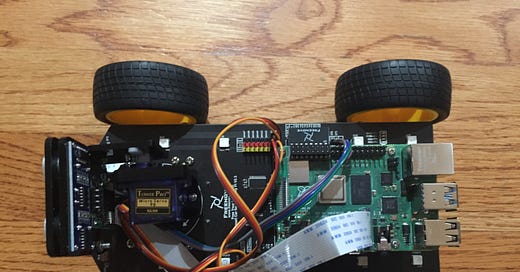Creating A Farming Autonomous Rover (FAR)
An affordable and autonomous rover for maximizing harvest through autonomous monitoring.
This is a blog post series. I will be posting more about this project in upcoming blogs.
The Problem:
Spoilage is a prevalent problem for growers that are attempting to maximize the yield and quality of their food. According to the Food and Agriculture Organization by the UN (FAO), Every year, around 290 billion dollars is wasted on global agriculture produce that gets spoiled by insects and diseases. Therefore, to make monitoring the spoilage of crops easier, I have developed the Farming Autonomous Rover (FAR), a rover that will autonomously drive through fields, detect spoiled fruits, and generate a heatmap to delineate where the farmer should focus to mitigate spoilage.
What is FAR ?
FAR is an acronym for the Farming Autonomous Rover, a rover that I am developing to combat the aforementioned problems pertaining to spoilage. The goal of the rover is to be able to autonomously navigate a field and create heat maps that delineate regions in that field that are high in spoilage. Since spoilage can be caused by disease and pests, FAR will be an easy and affordable solution to constantly monitor and localize instances where these problems arise.
General Outline of FAR
The pipeline of FAR is the following:
An image will be captured by the camera and stored on the Raspberry Pi that is attached to the rover.
A trained object detection model will detect if there is a fruit in the view of the camera and what type of fruit it is. Also, it will detect unfresh spots on the fruit.
If there are unfresh spots on a fruit, then the longitude and latitude of the rover (or perhaps fruit, as I am looking into it) will be recorded.
Unsupervised learning will be used to generate heatmaps from the location data.
The rover will have self-navigation abilities.
Final Statements
Overall, I chose to work on FAR, because it extends the current trend of artificially intelligent software being deployed on hardware to solve a prominent problem in agriculture: the monitoring of disease or pest induced spoilage. Additionally, there are plenty of skills that I will obtain and technologies that I will come to be familiar with from doing this project.



